アケビの花々は薄い赤紫色で、雌花と雄花があります。蜜腺はないものの、芳香で虫を誘き寄せて受粉。花弁のように見える3枚は萼片です。
The flowers of Chocolate Vine are light reddish purple, and there are female flowers and male flowers. Although it has no nectaries, it attracts insects with its fragrance for pollination. The three pieces that look like petals are sepals.
【仮名】アケビ
【和名】木通
【英名】Chocolate Vine, Akebi, Akebia
【学名】Akebia quinata
【誕生】10/ 23, 11/ 01
【開花】04, 05月
【花色】White, Purple
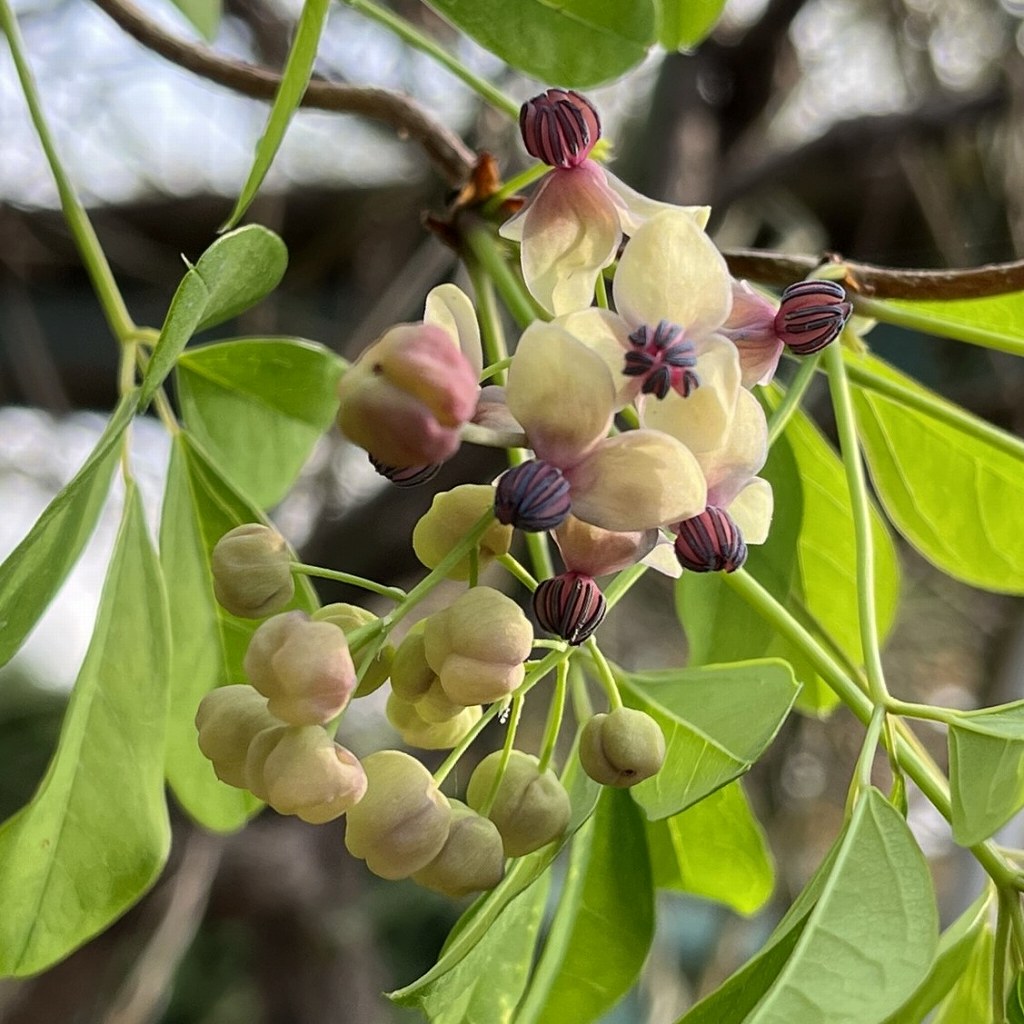
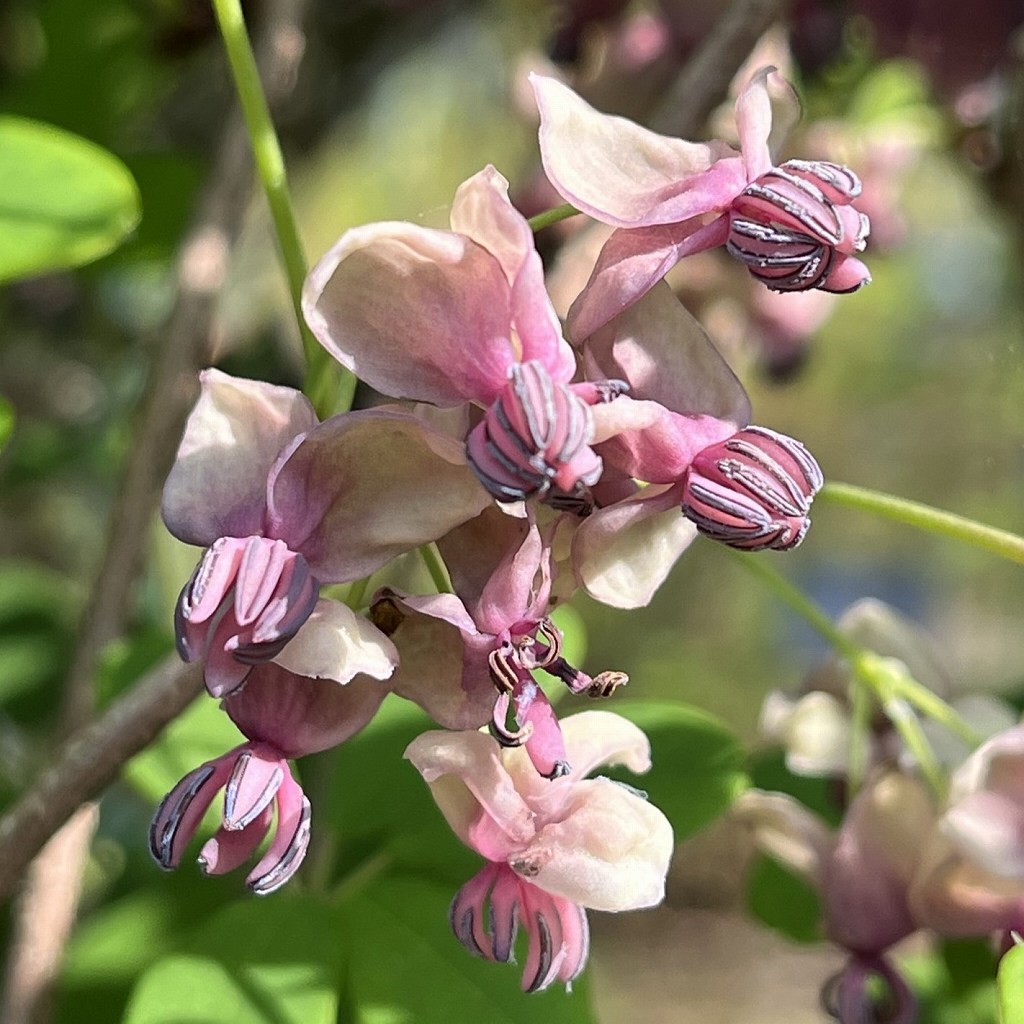
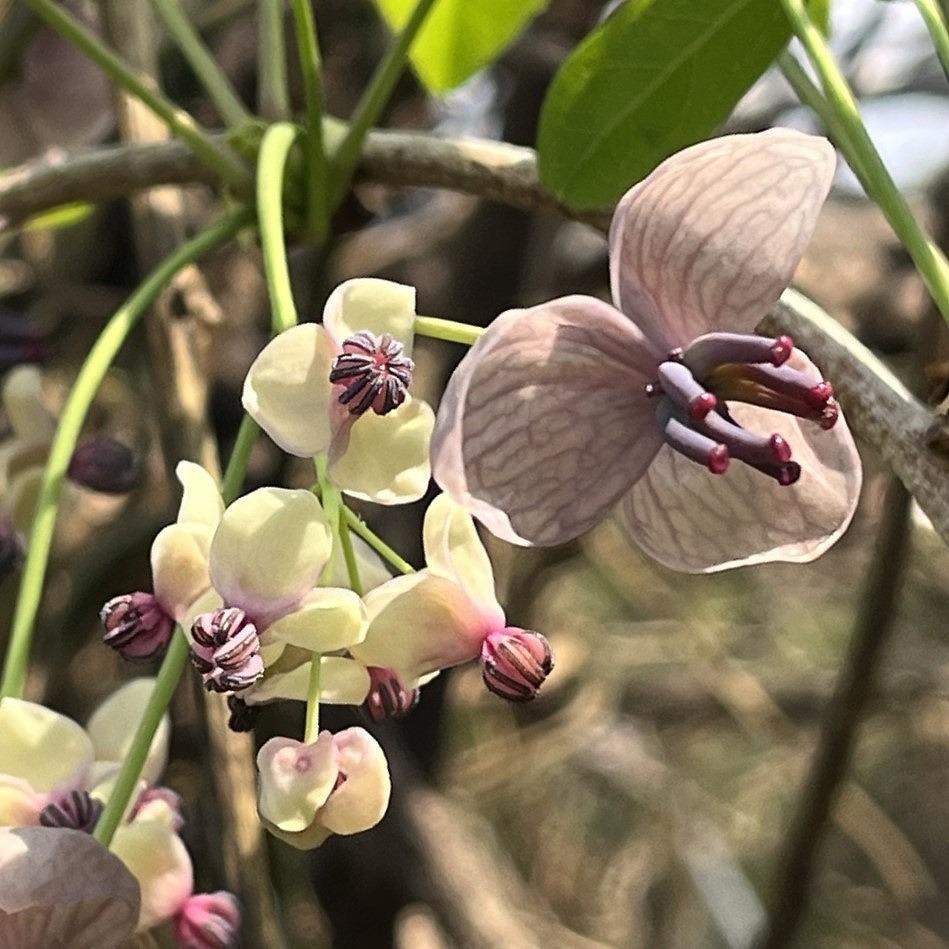
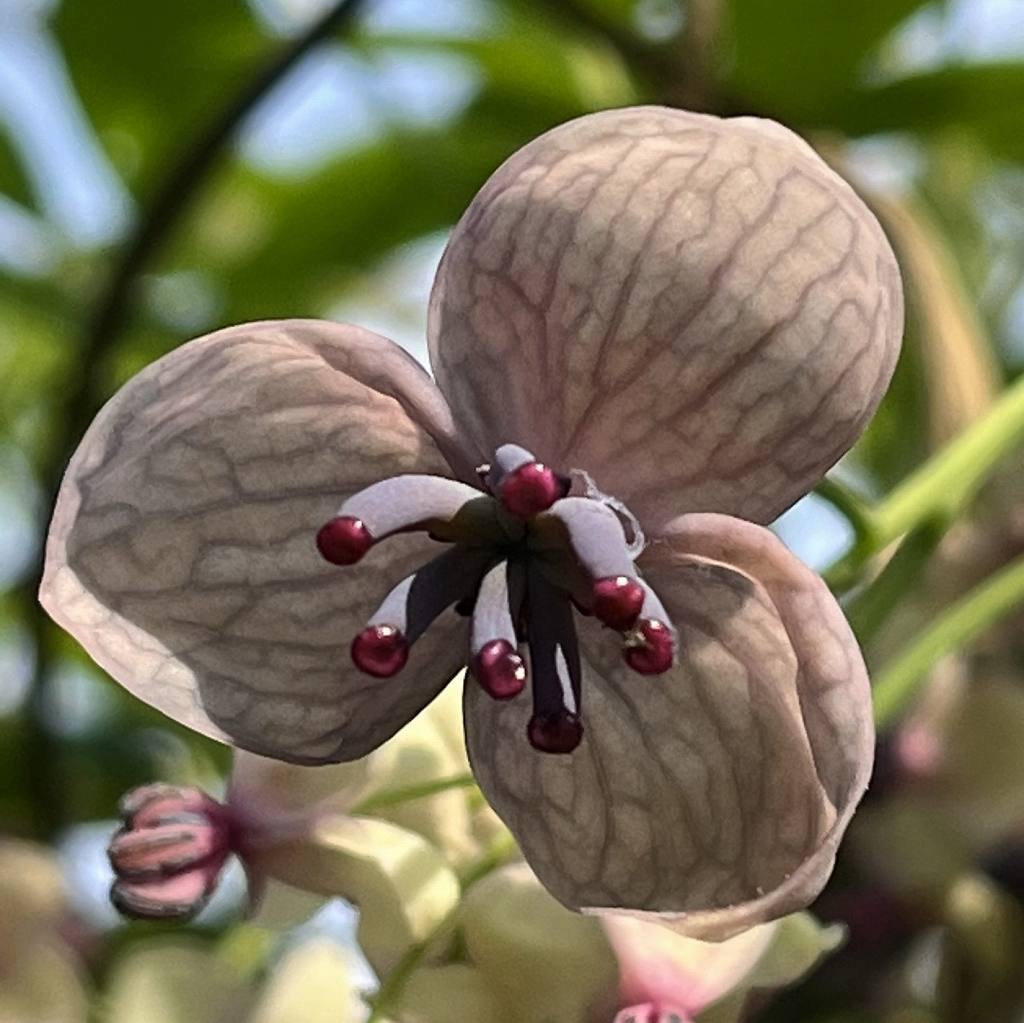

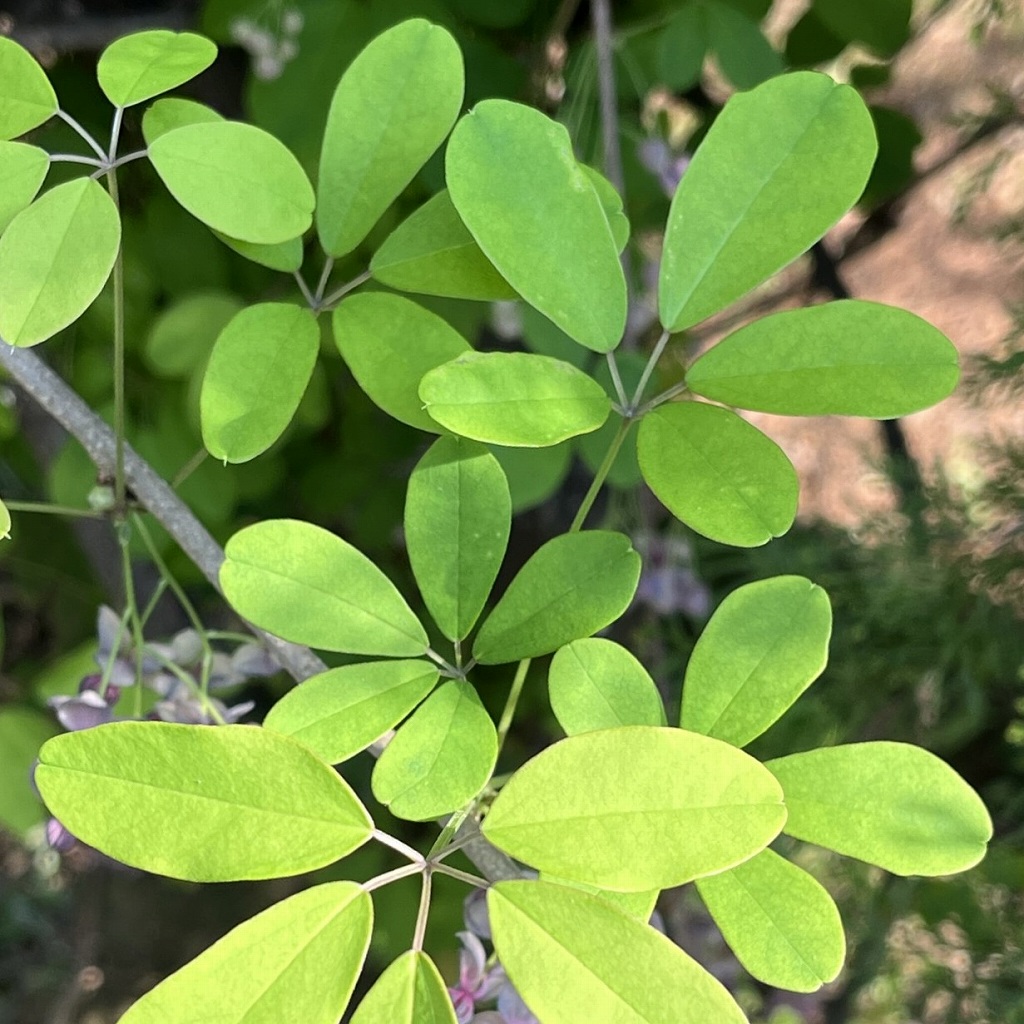
アケビ
アケビの概要
アケビはアケビ科の蔓性落葉低木です。日本では本州から四国、九州まで、国外では朝鮮半島、中国に分布。山地から平地まで、陽当たりの良いところで自生し、蔓を樹木などに巻き付けます。もともと「木通」は古くから親しまれている果実のこと。樹全体の呼称は「木通葛」です。
アケビの名前
アケビの和名は、果実が熟すと果皮が割れることから「開け実」の転訛とされます。「開けつび」という地方名もあり、女性器に由来するとも。ラテン語の属名アケビアもこの和名に由来し、種小名クイナータは「5つの葉」という意味です。漢名「木通」は小水が通じる生薬だから。
アケビの姿形
アケビの蔓は左巻きで木質化。葉は小葉5枚が束生し、その葉柄が互生します。花は雌花と雄花があり、薄い赤紫色。蜜腺はないものの、芳香で虫を誘き寄せて受粉します。花弁のように見える3枚は萼片。果実が熟すと果皮が縦に裂け、白色の果肉に包まれた黒色の種子が現れます。
アケビの近縁
アケビの近縁種「三葉木通」は小葉が3枚、花が濃い赤紫色で、寒地に自生。果実が大きく、風味も強く、「木の芽」も食用になり、栽培が拡がりました。自家不和合性のため、木通を授粉樹に利用。そのほか、両種の自然交配種「五葉木通」や、花が白色の「白花木通」もあります。
アケビの利用
アケビは蔓が生薬として利尿や通乳などに用いられるほか、木質化して丈夫なので編み籠などの工芸品にも。果実は白色の果肉に甘味があって生食できるほか、果皮に苦味があって肉詰めや油炒めなどに用いられます。種子は圧搾されて食用油に。若芽はお浸しやお茶に用いられます。
Chocolate Vine
Overview of Chocolate Vine
Chocolate Vine is a deciduous shrub that belongs to Lardizabalaceae family. In Japan, it is distributed from Honshu to Shikoku and Kyushu, and outside of Japan, it is distributed in the Korean Peninsula and China. It grows naturally in sunny places from mountains to flatlands, and the vines are wrapped around trees. Originally, Japanese name of that does not mean the whole tree, but the fruit that has been popular since ancient times.
Name of Chocolate Vine
The Japanese name of Chocolate Vine is a corruption of “open fruit” because the pericarp cracks when the fruit ripens. There is also a local name called “open vulva”, which is said to be derived from female genitalia. The Latin genus name Akebia is derived from this Japanese name, and the species epithet Quinata means “five leaves”. The kanji for Chocolate Vine means that the vine is woody and a herbal medicine that promotes urination.
Shape of Chocolate Vine
The Chocolate Vine curls to the left and becomes woody. The leaves are fascicled with 5 leaflets, and the petioles are alternate. The flowers have male and female flowers, and are light reddish purple. Although it has no nectaries, it attracts and pollinates insects with its fragrance. It has three petal-like sepals. When the fruit ripens, the pericarp splits vertically to reveal black seeds wrapped in white flesh.
Relatives of Chocolate Vine
A related species of Chocolate Vine, “Akebia trifoliata” has three leaflets and deep reddish-purple flowers, and grows naturally in cold climates. The fruit is large and has a strong flavor. Because it has self-incompatibility, Akebia quinata is used as a pollinator. In addition, there is also a natural hybrid of the two species “Akebia x pentaphylla”, and a white-flowered “Leucantha”.
Use of Chocolate Vine
The vines of Chocolate Vine are used as herbal medicines for diuresis and lactation. It is also woody and durable, so it can be used for crafts such as woven baskets. The fruit has a sweet white flesh and can be eaten raw, and the bitter peel is used for stuffing with meat or frying in oil. The seeds are pressed into edible oil. Young shoots are used for soaking and tea.


